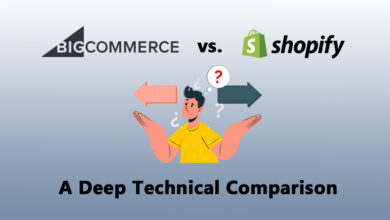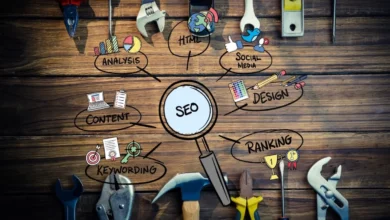What is a Storyboard and Why is It Vital in Producing Videos?

What is a storyboard? Online video has been proven as a powerful marketing tool. According to a study, it can be 600% more effective than direct mail and print.
It is no surprise that many companies have started using videos in their marketing strategy. Consequently, people start wondering how to craft effective videos to boost their businesses.
Well, there is no magic formula, but you can try to learn more about a storyboard. It becomes one of the key elements to creating high-quality marketing videos.
So, without further ado, let’s jump into the explanation.
What is a Storyboard?
A storyboard is the graphics representation in chronological order with some notes to help you make a pre-visualization draft for a video. It gives you a clear portrayal of how your video will look like. In general, a storyboard has some key elements, such as:
- It shows a clear story plot.
- Storyboards can be rough sketches, drawings, or photos.
- Storyboards have many action panels where each panel will feature detailed information and dialogue.
- It has arrows to indicate how each scene connects to the next one.
All those elements will help you to evaluate whether the sequences and story meet your expectations and goals. If something is missing, you can revise it before the production team starts making a video.
Traditional, thumbnail, and digital are the most popular types of storyboards. Let’s breakdown each of them to see which style will fit your need:
#1. Traditional
A traditional storyboard features a series of pencil sketches on paper that include detailed information about the concept of a video. It also contains notes, actions, camera angle, and many more.
Nowadays, people usually use a traditional storyboard for an initial draft during a creative meeting because it’s quite handy.
#2. Thumbnail
Thumbnail is the simplest sketch. It only provides a series of visual representations for each scene without further notes or detailed information. In simple words, it is the rough sketches of a traditional storyboard.
To make a thumbnail storyboard, you only need one or two pages because each scene is drawn in a small size.
#3. Digital Storyboard
If you’re not confident with your traditional sketching, a digital storyboard can be a solution. You can use a free template or software on your computer to make your storyboard.
It’s much easier than drawing on paper. Some software already provides illustrations or images and what you need to arrange each figure into a scene.
Why is a Storyboard Vital for Your Video?
Imagine what would happen if you built a house without a blueprint? It would be chaotic and probably don’t go like what you expected. A similar thing happens if you don’t use a storyboard in making a video. To see the detailed explanation, let’s dive in!
#1. Find errors at the early stage
Making a video needs a lot of details. With a storyboard, you can write down everything and even make a sketch. It will help the video production teams detect errors regarding narration, main idea, or the story’s details.
Detecting mistakes since the early stage is not merely to produce a perfect video. It has something to do with the production cost. Imagine how much energy, time, and budget you’ll spend if you spot the mistakes in the middle or at the end of the production.
#2. Share same visions with the whole team
Making a video is not an individual task. It will involve many people in the team. Each of them may have different visualizations when you only provide a script.
To make sure everyone is on the same page and gets the same visualization of the final look, you’ll need a storyboard. It will be the guideline for everyone when they work on animation, sound, illustration, and many more.
#3. Make the production easier
Having a list for groceries shopping will make it easier. You’ll know where to go and what you should do but without forgetting anything. The storyboard is quite the same.
When you have it on your hand, you can be certain about what you should do first and need, and it also eliminates misunderstanding during the production process.
On top of that, it’ll be easier for everyone on the team to do their task because it has a clear parameter about each scene. You’ll also have a proper tool to refer back for revisions.
#4. Try out some dialogues or punch lines
When you make a storyboard, you can test some dialogues. Evaluate if the conversations work just like what you’ve imagined before, or you need to make some adjustments.
You can also ask your team members about the dialogues or punch lines. Imagine your teammates as the audience. See how they react towards your punch lines.
If their reaction is different from your expectation, you can make early revisions. This step can prevent you from doing major revisions when the video is done.
#5. Plan your budget
When you break down your script into a storyboard, you can get a list of things you’ll need to make the video.
If it is a live-action video, the storyboard will show what kind of property that you need. If it is an animated video, you can calculate cost by considering the complexity, amount of detail, duration, and many more.
#6. Help you to choose the right sounds
When we talk about video, visuals are not the only element. It also needs sound. When you only present a script, it will be hard to imagine what kind of sounds that fit with a particular scene. However, your team will get better insights when you provide the visuals.
Conclusion
Making a storyboard becomes an important step before making a video. It will allow you to spot some missing points or errors so major revisions can be eliminated during production.
More than that, revising a storyboard is always easier. You can remove or replace a scene, change your dialogue, test your punchline, and many more. Having a storyboard also helps you to calculate the budget that you’re going to spend for the video.
Author Bio
Andre Oentoro is the founder of Breadnbeyond, an award winning explainer video company. He helps businesses increase conversion rates, close more sales, and get positive ROI from explainer videos (in that order).
Twitter: @breadnbeyond
Email: [email protected]
LinkedIn: Andre Oentoro



